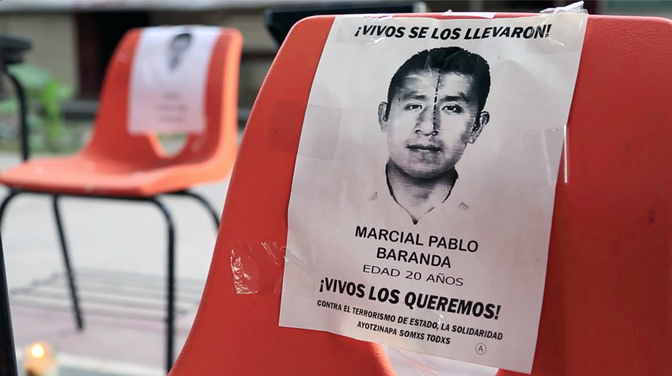We are all poor campesinos and because of that we’re not appreciated. This is why we have to go to other countries to demand justice. We continue in caravans for the North and the South and even internationally in order to assure that the government gives us some answers and so they turn over our children alive.
- Luciano Pablo Baranda
Marcial Pablo Baranda was sick during his first year of life and did not have hair until he was four months old. For this reason his family calls him Pelón (bald person.) The third of six siblings, he was a rebellious child, receiving frequent disciplinary reports for running away from school. On July 1, 2014, Marcial finished high school and the next day traveled to the Ayotzinapa Rural Teachers’ College because he is determined to become a bilingual teacher. He wants to teach indigenous children in his community, work toward a better future for himself and his family, and build his mother a sturdy house.
The Baranda Gallardo family is from the community of Xalpatláhuac, municipality of Tecoanapa, in the Costa Chica region of Guerrero. Marcial is one of a group of men who dance dressed in women's clothing and parade through town during the annual Festival of San Juan Bautista, the patron saint of Xalpatláhuac. He likes to go out with a bull, put on wigs and masks, celebrating with his friends and neighbors. "Before dancing, he gave me and his grandmother a hug and told us we were going to miss him,” recalls his mother, Eudocia Baranda Gallardo.
In Ayotzinapa, Marcial was always singing and dancing cumbias, a folkloric genre originating in Colombia. He shared a room with Felipe Arnulfo Rosa, Abel García Hernández, Adán Abraján de la Cruz and his cousins, the brothers Doriam and Jorge Luis González Parral. All of them are among the disappeared.











